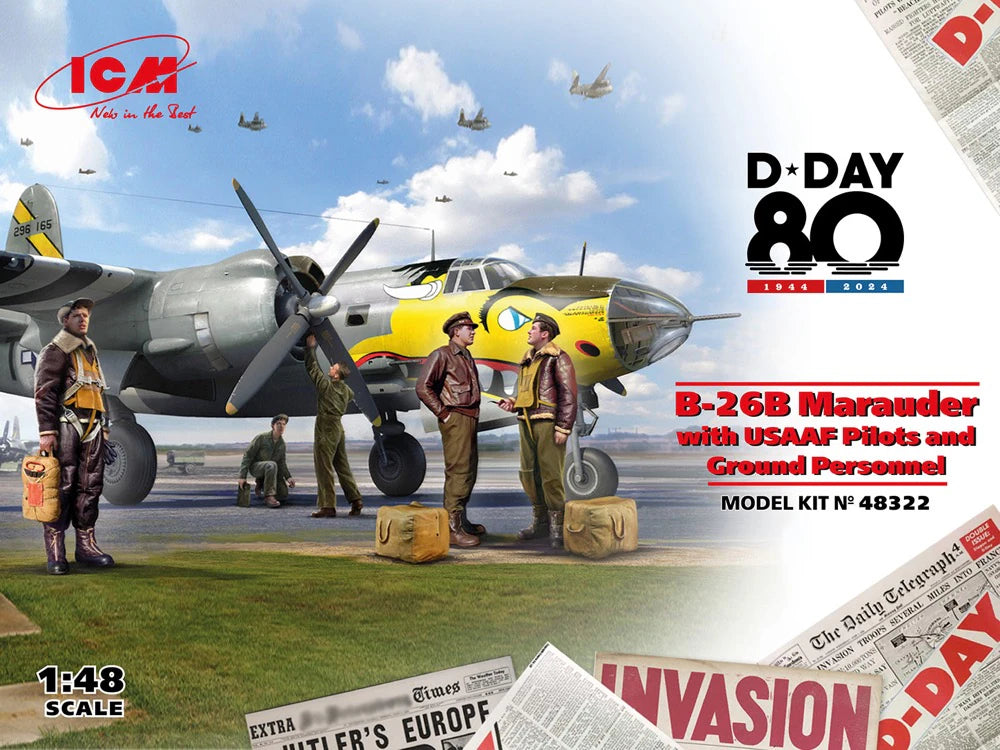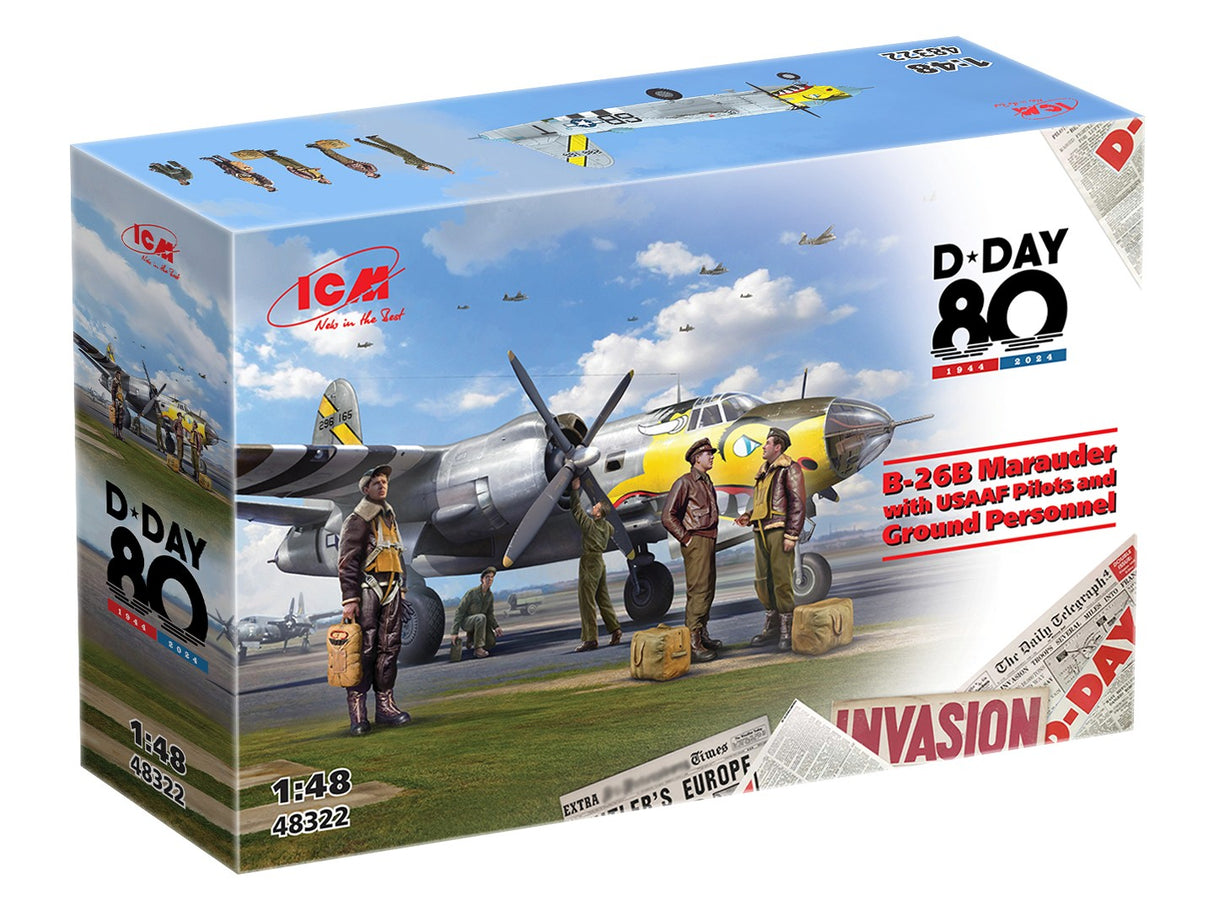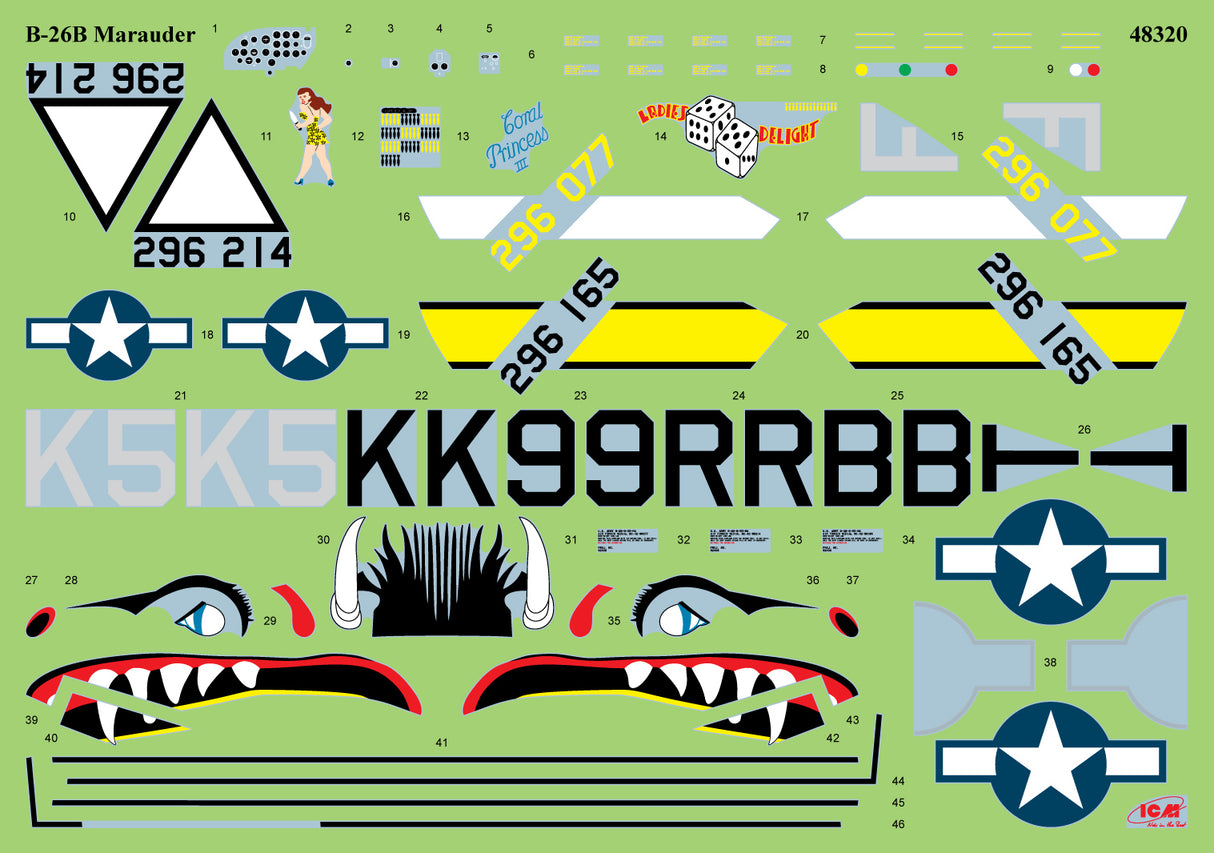ICM 1/48 B-26 MARAUDER WITH USAAF CREW AND PILOTS 48322
ICM 1/48 B-26 MARAUDER WITH USAAF CREW AND PILOTS 48322 will be backordered from our supplier. Delivery will take between 3-5 working days & orders will be despatched once completed.
Description
Description
D-Day 80 B-26B Marauder
with USAAF Pilots and Ground Personnel
The Martin B-26 Marauder is a medium-sized American twin-engine bomber with an all-metal high wing structure. The first test flight of the prototype took place in 1940, and serial production began in 1941. Due to the many "childhood diseases" of the first production batches, which led to numerous disasters, the plane was nicknamed "The Widowmaker". . This opinion overshadowed the very low combat losses among the crews flying the B-26 Marauder of later versions. Undoubtedly, however, this machine was very difficult to pilot and required great skills from the pilots. The B-26 bomber was produced in several versions, the most important of which were: A, B, F and G. The F and G versions were the least emergency of all produced. They also had much better performance than the B-25 bombers. Martin B-26 fought primarily at the European Theater of Warfare (Mediterranean Sea and North-Western Europe). In total, more than 5,000 of this aircraft were manufactured. Technical data (version G): Maximum speed: 451 km / h, practical ceiling 6040 m, operational range: 1850 km, armament: fixed - 5 machine guns caliber 12.7 mm, mounted - up to 2400 kg.
During World War II, the US Air Force, the USAAF (United States Army Air Force), was not an independent type of armed force and was formally under the command of the army. In the course of this conflict, they became the most powerful military aviation in the world, and at the time of the end of hostilities, they numbered about 2.25 million people! Due to the fact that the American aviation industry was one of the most modern and efficient in the world, the USAAF saw many successful, and sometimes great, aircraft models. It is worth remembering that in 1940-1945 it produced a total of approx. 295 thousand. machines, and therefore more than the aviation industry of Germany, Italy and Japan combined. Moreover, among these thousands of machines produced, one can point to the very successful P-38 Lightning, P-47 Thunderbolt or P-51 Mustang fighters, B-25 Mitchell or B-26 Marauder tactical bombers, but also the legendary B-17 Flying Fortress strategic bombers. and the B-29 Super Fortress. The USAAF pilot training system can also be considered successful and well-thought-out, as it was able to provide the rapidly expanding air force with well-trained pilots. It is also worth remembering that, unlike the German aviation, the American crews and pilots were rotated and after serving a certain period of time, they most often returned to the country, to training units, passing their experiences on. This fact may explain why American fighter aces (such as Richard Bong or Thoma McGuire) had "only" dozens of kills compared to several hundred kills of German aces (such as Erich Hartmann or Gerhard Barkhorn).
During World War II, the US Air Force, the USAAF (United States Army Air Force), was not an independent type of armed force and was formally under the command of the army. Thanks to their excellent industrial base and efficient organization, they became the most powerful military aviation in the world during World War II. It is also worth remembering that the USAAF grew tremendously in terms of the number of personnel - in 1939 they numbered about 25,000 people, but at its peak, i.e. in the summer of 1944 - as many as 2,400,000 people! So in five years they have grown almost 100 times! In this number, approx. 300 thousand. were officers, while about 2.1 million were privates and non-commissioned officers, mainly from ground service. Despite such enormous growth, the USAAF implemented effective training systems and methods, which made the overwhelming part of the above-mentioned personnel perform their tasks efficiently. It can also be mentioned that all types of technical and mechanical facilities were used on a large scale in the work of ground handling, which shortened the number of hours needed to bring a given machine to take-off and flight. It is worth remembering that the number of US overseas air bases also increased dramatically, in December 1941 there were 19, and in May 1945 - as many as 130!
Additional items are required to complete kit as illustrated
Payment & Security
Payment methods
Your payment information is processed securely. We do not store credit card details nor have access to your credit card information.







